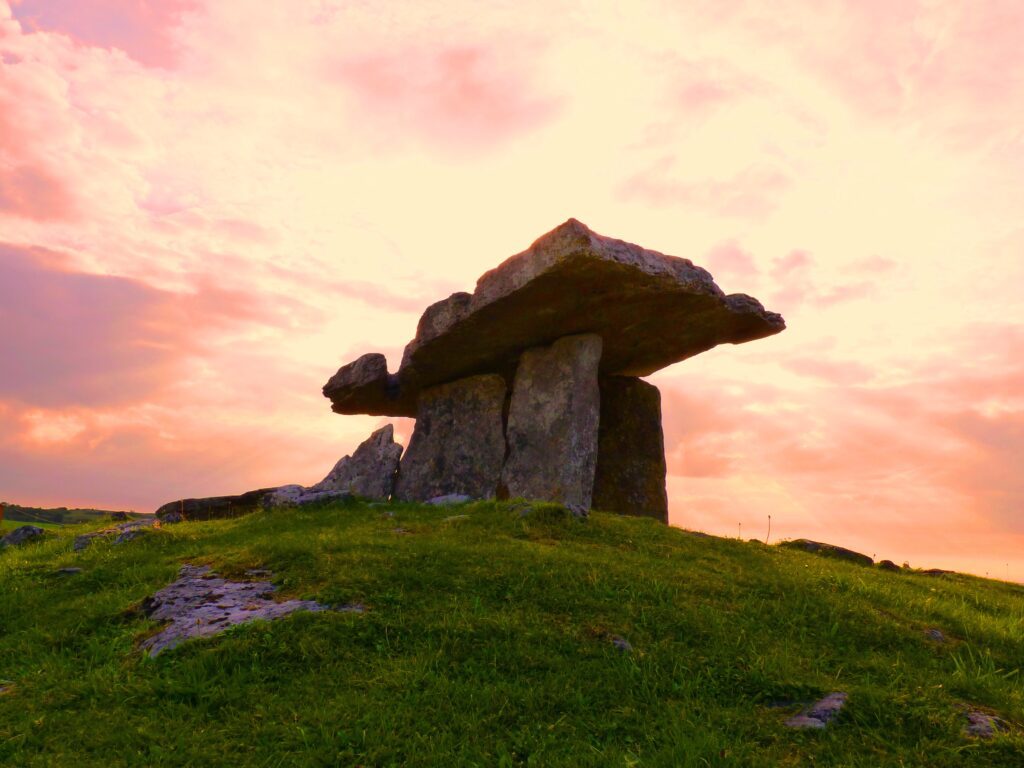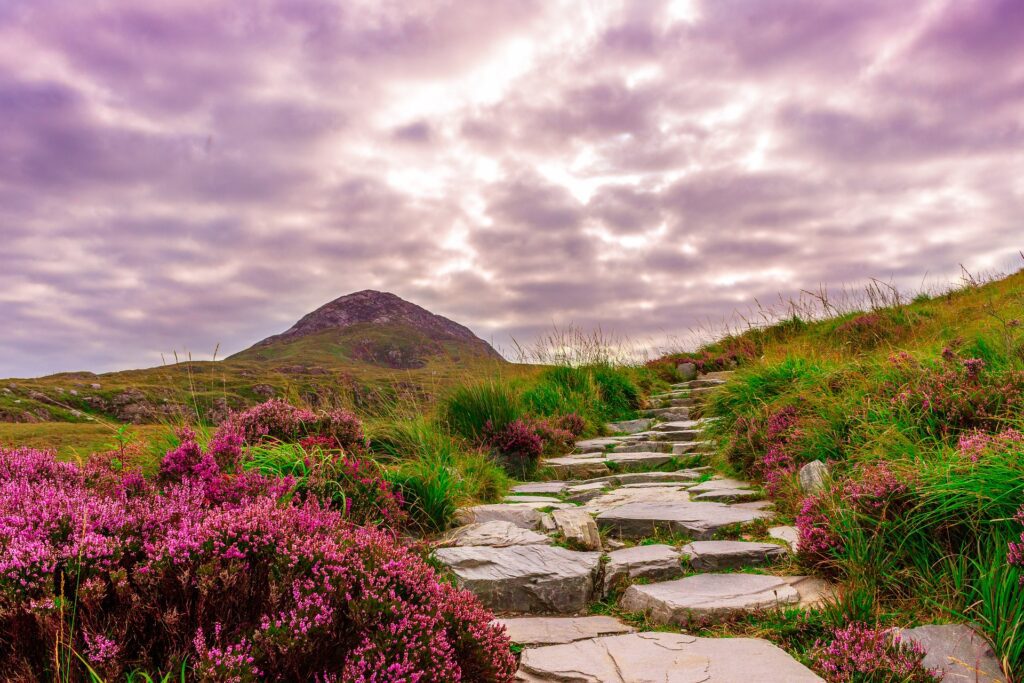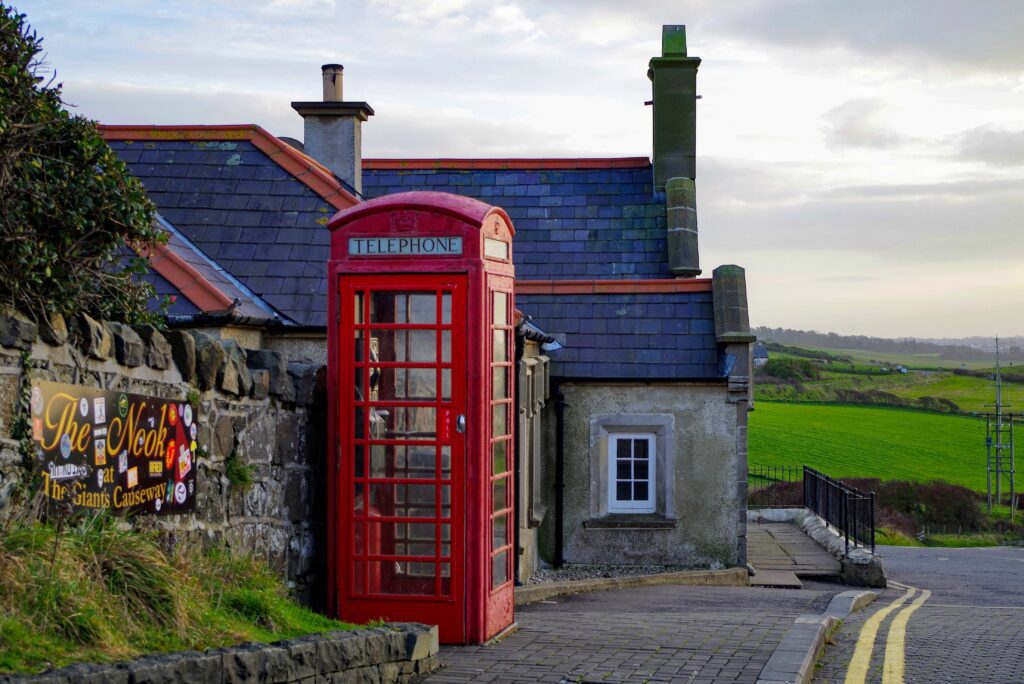
Ireland, the land of lush green landscapes, captivating folklore, and warm-hearted locals, is a destination that should be at the top of your travel “life list”. From the stunning Cliffs of Moher to the vibrant streets of Dublin, Ireland offers a diverse and enchanting experience that will leave you with cherished memories for a lifetime. In this Ireland travel guide, I’ll explore the captivating reasons why you should visit Ireland and provide you with some invaluable tips and tricks to make the most of your journey.
Why You Should Visit Ireland
1. Breathtaking Scenery: Ireland’s landscapes are truly a sight to behold. The country’s emerald-green countryside, rolling hills, and dramatic coastlines will make you feel like you’ve stepped into a fairy tale. Don’t miss the Cliffs of Moher, the Ring of Kerry, or the mystical Giant’s Causeway in Northern Ireland for awe-inspiring natural beauty.
2. Rich History and Culture: Ireland is steeped in history and tradition. Explore ancient castles like Blarney Castle and Bunratty Castle. Delve into the vibrant culture of Dublin, and immerse yourself in the rich folklore of the country, complete with leprechauns, fairies, and legends.
3. Warm and Welcoming Locals: The Irish are known for their warm hospitality and friendly demeanor. I’ve often compared them to Southerners here in the U.S. because they’ve never met a stranger! Strike up a conversation with a local at a traditional pub, and you’ll quickly feel like part of the community. They might even share some insider tips for your trip.
4. Delicious Cuisine: Irish cuisine has come a long way, and today you can savor gourmet dishes made with locally sourced ingredients. Be sure to try traditional dishes like Irish stew, seafood chowder, and, of course, the famous Irish soda bread.
5. Music and Dance: Get your toes tapping to the rhythm of traditional Irish music in cozy pubs or experience the exhilaration of a live step-dancing performance. Irish music and dance are an integral part of the culture and an absolute must-see.

Popular Cities to Visit in Ireland
1. Dublin: Start your Irish adventure in the capital city of Dublin. Visit Trinity College to see the Book of Kells. Explore the historic Dublin Castle, and enjoy a pint of Guinness at the Guinness Storehouse. Don’t forget to stroll along the lively Temple Bar district for a taste of Dublin’s vibrant nightlife.
2. Galway: Known for its artsy vibe and colorful streets, Galway is a must-visit city on the west coast of Ireland. Explore the charming Claddagh district, visit the Galway Cathedral, and enjoy traditional Irish music in the city’s pubs.
3. Killarney: Nestled in the heart of County Kerry, Killarney is the gateway to the stunning Ring of Kerry. Explore Killarney National Park, take a jaunting car ride through the Gap of Dunloe, and marvel at the beauty of the Lakes of Killarney.
4. Belfast: Venture to Northern Ireland’s capital, Belfast, and discover its rich history. Explore the Titanic Belfast museum, visit the historic Crumlin Road Gaol, and take a Black Cab tour to learn about the Troubles.
5. Cork and Blarney: Don’t miss the picturesque city of Cork and the nearby Blarney Castle. Kiss the Blarney Stone for the gift of eloquence. Explore the English Market in Cork, and soak in the local atmosphere.

Tips and Tricks for Your Irish Adventure
1. Weather Essentials: Irish weather is not extreme, but the country does get a lot of rain, particularly along its west coast. And if you’re traveling to Ireland during winter, know that the season’s days are shorter; the sun rises at about 8:00 a.m. and sets at about 4:00 p.m., which means you have to cram a lot of sightseeing into a few hours. During summer, the sunsets are as late as 10:00 p.m.
I’ve visited Ireland twice in the winter and found it to be equally as wonderful as visiting in the summer, (with the appropriate clothing/preparation, of course).
Be mindful of the seasonal changes. Pack layers of clothing and a pair of rain boots or waterproof shoes, and you should be fine. Prepare for a mix of sunshine and showers.
2. Climate: The climate of Ireland can be described as maritime influenced, with mild and humid weather. May to mid-September is by far the warmest, and generally the drier time of year, relatively speaking. In the summer, temperatures usually fall in a range of 15°C to 20°C (59 to 68°F), but sometimes they can reach up to 25°C (77°F) or higher. Winter days can be drizzly, cold, and short, but because of the Gulf Stream, the temperature seldom falls below freezing, averaging about 7°C (45°F).
Snow is very infrequent, but more common in the mountainous regions of Ireland. Rain falls throughout the year, and the weather in Ireland can often change very quickly. In fall and winter, Strong Atlantic low-pressure systems can bring gales and uncomfortable weather with showers, thunderstorms and heavy rain, especially in the western coastal parts and the mountainous regions of Ireland.
3. Driving in Ireland: The best sites in the Emerald Isle can be seen via public transportation or tour buses, but renting a car is not a bad idea to get to those obscure sites. Be sure the vehicle you rent is a small one, as rural roads in Ireland are narrow, as are parking spaces in the cities.
Driving in Ireland takes a certain amount of skill. There’s the whole other-side-of-the-car, other-side-of-the-road thing to contend with—just remember to stay left, and you’ll be all right. On highways, there are typically two to three lanes; rarely will you find monster four- or five-lane thoroughfares in Ireland. The fast lane—which is always on the right—is used solely for passing slower traffic.
Be aware that speed limits vary widely on highways. It may be 120-kilometers per-hour (approximately 75-m.p.h.) in parts and then suddenly change to 80-kilometers per-hour (50-m.p.h.), so always keep an eye out for the number inside the round signage on the side of the highway.
When planning your trip, check to see if your route has any toll requirements.
4. Trains & Buses in Ireland: The trains in Ireland carry you in comfort, but they can be a bit pricey. So, if you intend to travel on one during your trip, it’s best to try and book tickets in advance to take advantage of online discounts that the Irish Rail offers.
If you choose to travel by bus, be aware that you must flag the bus to get it to stop.
5. Pub Etiquette: Visiting a traditional Irish pub is a must, but remember that tipping isn’t mandatory. Feel free to strike up a conversation with locals and enjoy the live music.
6. Currency: Ireland uses the Euro (€). The main credit cards accepted in Ireland are Visa and MasterCard. American Express is typically only accepted in larger establishments such as department stores and some chain hotels. While credit cards are widely accepted, it’s wise to have some cash on hand for more remote areas.
As part of the United Kingdom, Northern Ireland uses pound sterling rather than the euro. In the border regions, both currencies are often accepted.
If you need currency when you arrive, you can exchange a small amount at the airport. However, the exchange rates at airports are generally higher than in other parts of town. While some travelers still prefer this method of exchange, you should take into account the poor exchange rates.
The least expensive way to exchange money is using your debit bank card at an ATM (I usually do this in the baggage claim area of the airport upon landing). However, it is highly recommended that you contact your bank before leaving the U.S. and notify them of your international travel plans so that your transactions in Ireland are not flagged as “suspicious activity.” You can also inquire if they charge foreign transaction fees.
Speaking of money, remember that those goodies you’ll find to buy on Grafton Street in Dublin are tax-free! That’s right, travelers who live outside the European Union can shop tax-free in Ireland. You can read more about it here.
7. Plan Your Accommodation: You’ll want to book your accommodations in advance, especially during the peak tourist season, to secure the best options and prices.
8. Communication & Technology: English and Irish are the most widely spoken languages of Ireland, with the former being spoken by 94% of the population.
Wi-Fi in Ireland is quite excellent in hotels and B&Bs across the country. In addition to your lodging, you’ll find complimentary Wi-Fi at many cafés, pubs, and tourist attractions. For many travelers, this is more than enough connectivity. If you want to be connected more than that, you have a couple of options. Wireless carriers are always updating their international plans, so it’s good to check with your cell phone provider before your trip. Verizon and AT&T currently have international travel plans that cost about $10/day, but you only pay for them on the days you use the plan.
Just so you know, even the most thorough data plans won’t work in some of Ireland’s most remote locations.
9. Getting There: The Republic of Ireland has three international airports—Dublin, Cork, and Shannon— while Northern Ireland has one in Belfast. Dozens of European airlines offer direct flights to Ireland from European countries including Aer Lingus, Air France, British Airways, Virgin Atlantic and Lufthansa; from the United States, Delta, Aer Lingus, American Airlines, and United are some of the major airlines with flights to/from Ireland.
10. In Case of Emergency: There are two emergency numbers in Ireland—112 and 999. Both are free of charge to call. Call the emergency services by dialing 112 or 999 from a mobile or fixed phone line.

Contact Me to Book Your Irish Adventure!
Are you ready to embark on a journey through the enchanting landscapes and rich culture of Ireland? Whether you’re seeking a romantic getaway, an adventure-filled vacation, or a deep dive into Irish heritage, I’m here to make your dream trip a reality.
Contact me today, and let’s plan your unforgettable Irish adventure together. Ireland awaits, and I can’t wait to be a part of your incredible journey!
Did you enjoy this article? Then go to my website and sign up for the Life List Travel newsletter at the bottom of the home page for more travel inspiration and tips!
2 responses to “Ireland Travel Guide: Discover the Emerald Isle”
-
Ireland is such a magical place! I’d love to return and visit Dublin, the people are some of the friendliest I’ve ever met.
-
Ireland has been on my bucket list for ages. It looks so beautiful.
Leave a Reply